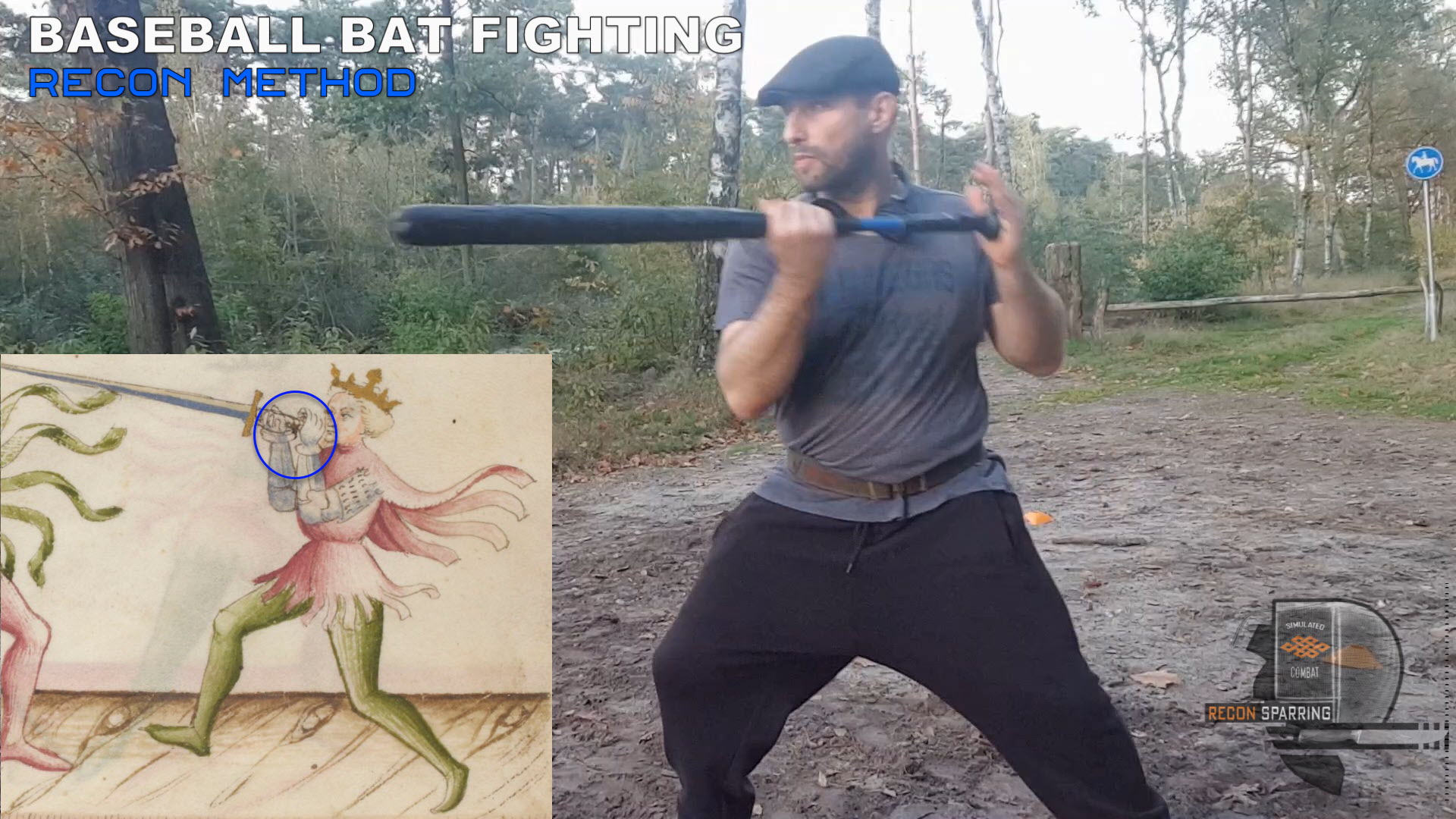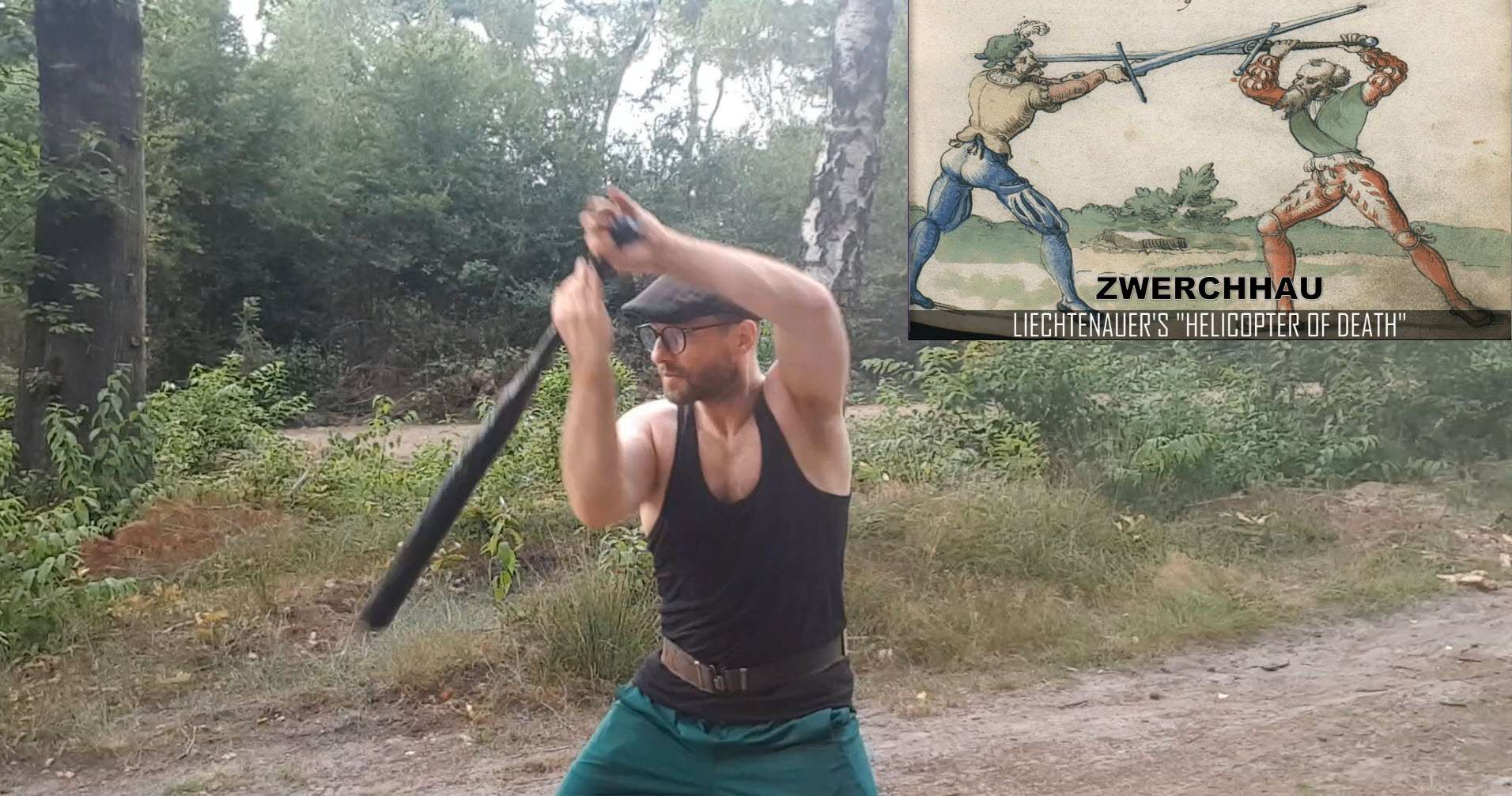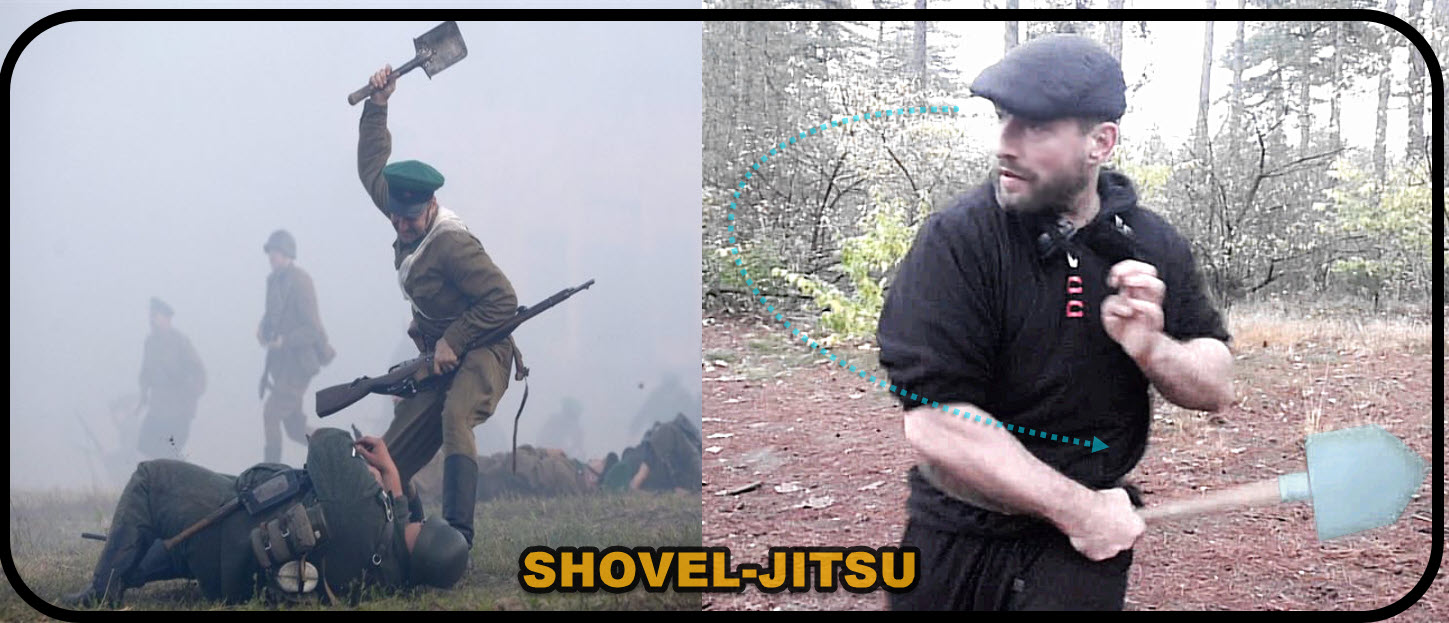Half swording with a baseball bat using a pommel grip
Recon Terminology: Stance: Therium (Elasmotherium) Thrust: Battering ram thrust Based on: Stance/Guard: Posta di Bicorno Trust: Half-sword handling » The stance/guard and thrust with the baseball bat is partially inspired by the Posta di Bicorno (Two Horned Guard), which is locked so that the point is always in the middle of the line.
✅ Short interpretation Posta di Bicorno: Posta di Bicorno is undoubtedly one of the most misunderstood postas in all of armizare. The textual description is not particularly clear, as the posta only appears once, and the illustrations from different manuscripts show different grips. The pommel grip:
✅ The grip is the main point of contention with this posta. The Getty, Florius, and Morgan manuscripts depict the left hand with the thumb facing back or even cupped over the sword’s pommel. This provides a solid blade that is highly effective in engagements.
✅ To maintain contact with your palm, rotate your hand around the pommel. Keep your elbows in tight, your hands close to your chest, and your forearms braced against each other.
✅This stance creates a strong line, enabling your weapon to penetrate your opponent’s defenses. It offers stability, precision, and a powerful thrust suitable for confined spaces and close-range combat. Although you won’t be able to fully extend your arms, you can compensate for the distance by using your legs and stepping into your opponent.
✅ Disclaimer for the HEMA purist: It is important to know that at Recon Sparring, we take building blocks from historical sources. It can be a grip, leg position, angle, whole sequences, etc. and sometimes this leads to a partial connection. The connection with the Posta di Bicorno is mainly observed in the positioning of the point and the cupping of the pommel (which is also a subject of debate), while the remaining aspects can be interpreted as half-swording. Half-swording can be performed from various guards using different grips. We modify and adapt tools from the past for self-defense purposes of today.


